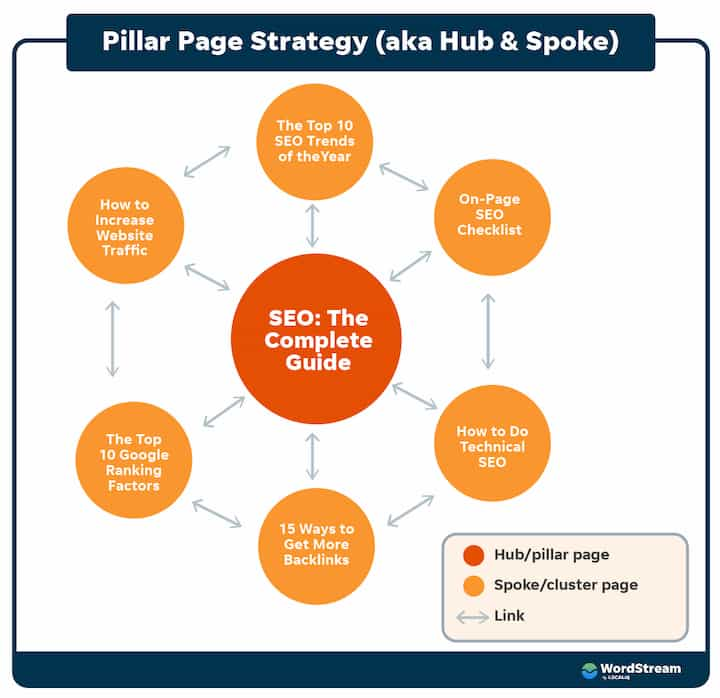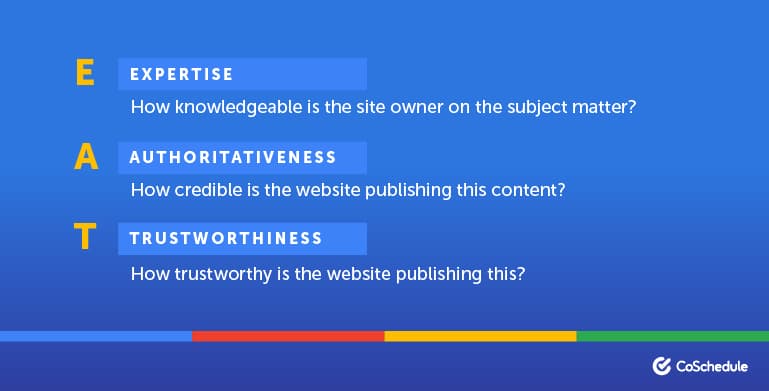Is Cluster Content the Key to Strengthening Topical Authority?
Search engine optimization is changing. As Google’s ranking factors continue to evolve, executing a successful content strategy no longer revolves around keyword-based SEO and thin content.
Consumers want more. A whopping 64% of searches are now made up of more than four words. Phrases such as “Siri, where should I eat tonight” don’t even contain a keyword, making it harder than ever before to create content that ranks well. In order to make sure your site appears at the top of a search, it must cover all bases.
This is where cluster content comes in handy. Considering that most consumers engage with a website several times before converting, it’s important to make sure you can answer every question with a blog post and are constantly appearing in all industry-related searches.
The more you say on a topic, the louder your voice becomes within your industry. From cornerstone pillar pages to cluster content linking, let’s have a closer look at the SEO strategy that will position your brand as a thought leader within your trade.
What is cluster content?
As defined by DemandJump, “a content cluster (sometimes referred to as a topic cluster or SEO Pillar) is a network of related content, with certain nodes of the network being larger, and certain connections being stronger.”
Cluster content takes the phrase “content is king” to a whole new level. Essentially, the cluster method assumes that anyone who searches for a particular phrase on Google is also likely to interact with similar topics under the same umbrella.
Taking an umbrella topic that is widely searched by your demographic and segmenting it into a collection of related articles and blog posts is a great way to cover all search basis, demonstrate your expertise on a subject and boost your topical authority.
Pillar Page: One of the keys to SEO success
These clusters of informative content sit neatly under a pillar page, otherwise known as the cornerstone of the umbrella and the page that is most likely to appear in a general topic search.
The question is, could your pillar page be the key to improving your SEO traffic? If handled correctly, your pillar page could have a significant influence on your search rankings.
As the cornerstone of the topic cluster, your pillar page should cover every basis and link to every related article within the group. This page alone should provide a comprehensive overview of the topic at hand and be packed full of searchable keywords, phrases and call-to-actions that encourage the consumer to dive into the related content rabbit hole.
As you can see here in the example from WordStream, the pillar page is SEO: The Complete Guide, which will contain a short overview of all related topics, such as How To Increase Website Traffic and the Top 10 Google Ranking Factors, before linking out to these umbrella articles for more information.
Having a strong content source at the heart of your cluster will drive engagement and decrease page bounce, as consumers are more likely to click on and dive deeper into the topic.
Incorporating all potential search terms into your pillar page also boosts your chances of appearing in a general topic search, which is exactly what your want if you’re looking to improve your SERP score!
Can pillar pages improve your topical authority?
It’s no secret that pillar pages improve your visibility online. If you’re constantly ranking in all niche areas of a topic, your name will quickly become one your target audience remembers.
Pillar pages improve your topical authority for a number of reasons:
Building your reputation
It’s always Google’s goal to provide a solution to a searcher’s problem. When ranking a site, Google scans for expertise, authority and trust.
A strong pillar page that links out to a cluster of related articles demonstrates that you have topical expertise and can be trusted as an authoritative solution to a search.
Improving your site structure
If you’re looking at the technical side of SEO, pillar pages are a UX designer’s dream. Creating a blanket page that has a tier-down approach allows site crawlers to navigate and locate search solutions quickly, yet again sending you further up that search string.
Broad keyword ranking
Since a pillar page remains the hub for an umbrella topic, it should contain the broadest keyword phrases that can be picked up in a number of alternate searches. The broader, high search volume keywords drive traffic, in turn pouring link juice into backlinked cluster pages that opt for niche, refined key phrases.
How to create cluster content that drives SEO success
So, how do you create the perfect cluster content campaign? There are many steps associated with the cluster method, all of which take time and dedication from a content team.
From picking the perfect umbrella topic to preparing your site for a traffic influx, here are a few things to consider before jumping into designing your pillar page.
Choose the right topic
According to Leslie Ye, cluster content manager at HubSpot, choosing your content topic is often the hardest part of the process. You need to make sure that your pillar page can answer a number of broad questions and branch off into linkable topics with ease.
“When considering whether something should be called a pillar page or not, ask yourself this: Would this page answer every question the reader who searched X keyword had, AND is it broad enough to be an umbrella for 20-30 posts?” says Ye.
“If you’re trying to get the page you’re working on to rank for a long-tail keyword, it’s not a pillar page. If the page you’re working on explores a very narrow topic in great depth, it’s not a pillar page. If the page you’re working on touches on many aspects of a broad topic, it’s probably a pillar page.”
Identifying what constitutes a pillar page could be a make or break for your content cluster, so it’s important to brainstorm and conduct research into the topics your demographic is currently talking about for a shot at seeing engagement.
Start your keyword research
Once you’ve decided on your umbrella topic, it’s time to pull out those keyword tools and start searching.
The important thing here is to separate your pillar keywords and cluster keywords. Your pillar keywords should be broad, high-volume phrases that are likely to be searched frequently. While these are hard to rank for, they are juxtaposed nicely with cluster keywords that are likely to be niche, long-tail and much easier to rank for.
Make sure the keywords remain at the top of your headlines and within the first few paragraphs of your content. This is where they are most likely to be crawled.
Prepare your site for more traffic
One thing the cluster method ensures is more site engagement and organic traffic, especially originating from pillar page backlinks.
In order to keep your site’s user experience up to scratch, it’s important to ensure your website can handle large influxes of traffic with little to no downtime. If your page takes up to 10 seconds to load, you’ll lose 100% of your viewers.
Make sure you invest in a web host that offers high speeds and large bandwidth. Before you settle on a hosting service, make sure you look into how much web hosting costs, and the different types of hosting plans available. For example, if you’re creating your content clusters on WordPress, opt for a WordPress website hosting plan, which opens up more opportunities to track content success and edit clusters with ease.
Are you ready to start creating content?
Cluster content can help small and medium-sized businesses put themselves on the map. If you’re looking to improve your topical authority, it’s important to demonstrate your expertise in any way you can.
From blogs to articles to videos to social posts, the key to getting your ranking score up is to be the loudest person in the room.
Tags: SEO.


